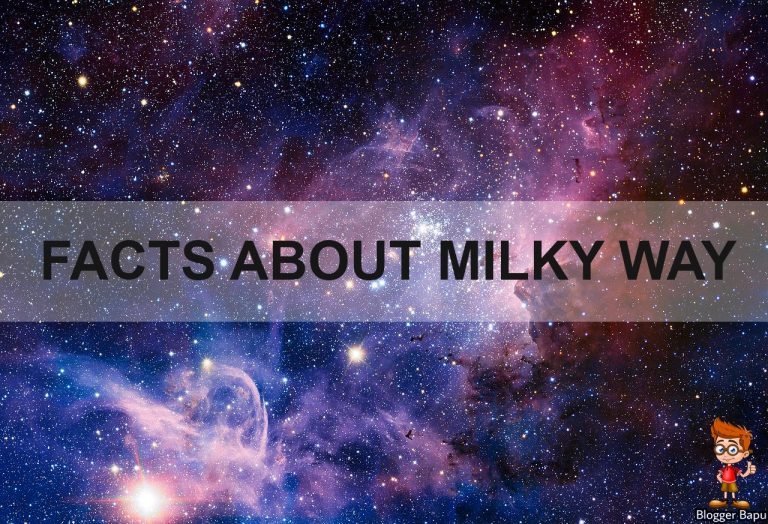Milky Way :
The Milky Way Galaxy is most huge to people since it is home sweet home. Be that as it may, all things considered, our galaxy is a run of the mill banned winding, much like billions of different cosmic systems in the universe. Lets talk about some interesting facts about our galaxy.
1: All Naked Eye Stars Contained in Milky Way
It isn’t that long prior that we used to think about the stars as light holes in a dark drapery, only somewhat more remote than we could reach, and paradise was on the opposite side. In undeniable reality, every one of the stars we can find in the night sky with the bare eye, which is around 9,096 or 4,548 from every half of the globe, are contained inside our own particular Milky Way galaxy. Clearly the greatest grouping of stars we can see lie toward the Milky Way’s galactic plane and focal lump, which sadly is difficult to see because of across the board light contamination, except if seeing from country territories on a reasonable, moonless night.

2: The Milky Way Is Vast
The Milky Way is an expected 100,000 light-years in width and contains up to 400 billion stars, including our own Sun. Disregarding such an immense number of stars, the separation amongst Earth and even our closest star framework, Alpha Centauri, is tremendous. Obviously, understanding such cosmically vast numbers and sizes isn’t simple. Would you be able to envision 186,282 miles, for example? Obviously you can’t, but then light ventures that far in a solitary second, or 5.88 trillion miles in a year. To place things into some sort of point of view, if you somehow happened to tally at a rate of one every second, it would take around 11 and a half days to achieve only one million. Alpha Centauri, our closest star separated from the Sun, is 25.6 trillion miles (4.3 light-years) away – good fortunes envisioning! Indeed, even with the best innovation we can at present gather it would take a very long time to come to our closest star. The Space Shuttle, for example, would take around 165,000 years to achieve Alpha Centauri, while the Voyager-1 rocket which has now left our nearby planetary group won’t pass different stars for 40,000 years.
3: Just One Of Many Galaxies
The fact of the matter being that we’re extremely not great everywhere sizes! The old Greeks, for example, trusted that our close planetary system spoke to the entire universe, with the Sun, Moon, planets, and settled stars rotating around the Earth regularly. Truth be told, Archimedes evaluated the entire universe to be around what might as well be called two light-years over, which is long ways from its real separation of around 14 billion light-years. Measure is elusive to the point that it wasn’t until 1923 that Edwin Hubble was at long last ready to demonstrate that our galaxy was not the entire universe, and that in certainty there were many billions of systems past our own. As indicated by latest evaluations in light of Deep-field pictures from the Hubble Space Telescope, the quantity of genuine systems in the universe could be in excess of 2 trillion.
4: Classified As A Barred Spiral Galaxy
The Milky Way is a winding equipped galaxy, and as is ordinary for around sixty-seven percent of those, our own is banished. It is suspected that such bars are the outcome of a galaxy drawing gas from its spirals into its heart, however as the thickness of the bars increment throughout the centuries their own gravity wrecks them bringing about spirals without bars. It is by all accounts some portion of a moderately aged winding galaxy’s ordinary life cycle to have bars for some time.
Some winding cosmic systems shape by brushing past different universes. Their gravities shred their globular shapes and leave long trails of stars that fold over the staying huge assemblages of stars. Frequently that is its finish, with their relative speeds so high that they will never connect again. Now and again there is sufficient fascination between them that they consolidate to shape a solitary galaxy. While the above occasion isn’t uncommon, most spirals are clarified by either of these speculations. You can take a gander at them at your own accommodation. The Density Wave Theory, which clarifies Saturn’s rings, clarifies a few spirals, while the SSPSF display clarifies numerous others, however the dialect and arithmetic in the last might be hard to process. Regardless, the Milky Way has developed by tearing apart and engrossing other littler universes that it has come into contact with more than a huge number of years, including smaller person worlds.

Related Post : The Theory Of Parallel Universe
5: On A Collision Course With Andromeda
Strangely, two cosmic systems could go directly through each other and have no collisions regardless of their billions of stars. In established truth, that situation is preferably more probable than a genuine collision in view of the tremendous separations between objects, which is somewhat of a help since we and the Andromeda Galaxy are set out toward a gathering in the far future. At show, the Milky Way and Andromeda universes are moving toward each other at a rate of up to 140 kms/s, giving them a gathering purpose of 4 billion years fron now.
6: Black Hole Located At Its Center
Obviously, this issue heading for the core of the galaxy needs to go some place. The most seasoned star in our galaxy is around 13.82 billion years old, framing only not long after the Big Bang, which implies a ton of time has passed, and a ton of issue has gone tumbling into the focal point of the galaxy. There anticipates a supermassive dark gap called Sagittarius An, arranged 26,000 light years away from Earth with a mass equal to 4.1 million Suns, and a wellspring of serious radio waves.
7: Galactic Year Last 250 Million Years
A galactic year keeps going in the vicinity of 225 and 250 million years in our piece of the galaxy, since revolution speeds change contingent upon area. The best gauge for ourselves has all the earmarks of being in the 240 million year go, since we’re around 66% of the way out on the Orion Arm of our galaxy.
8: Milky Way Could Contains Millions Of Planets
Planets and each sun will have a “Goldilocks” zone. At the end of the day, it’s conceivable that most stars will have a planet (or two) that will fall in the livable zone forever where it’s not very frosty and not very hot — it’s perfect. It could have fluid water, if it’s strong; regardless of whether it’s a gas goliath it could have water in the environment, with the goal that something natural could skim and live, in spite of the absence of “surface”
Related Post: Universe Is Made Up Of ?
Tags:
Facts about Milky Way, interesting facts about galaxy, interesting facts about milky way, Milky Way Contains Millions Of Planets, Barred Spiral Galaxy





This is awesome and knowledgable post.